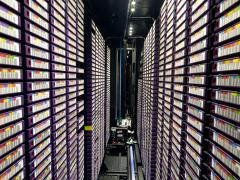The South African defence industry faces tough decisions amid continuous reductions in government funding for product acquisition and development, coupled with limited support for crucial activities like trials and facility availability.
With Treasury allocating just under R52 billion for defence in the latest National Budget, less than 1% of GDP, the nation risks falling behind global military powers in deploying effective modern defence solutions.
The shrinking budget not only threatens operational capabilities, but also places soldiers' lives at risk, as seen in incidents like the loss of three naval crew members aboard the SAS Manthatisi submarine in the Western Cape, and six SA Army soldiers in Lohatla in the Northern Cape during training exercises last year.
In 2021, a Special Forces soldier operating deep behind enemy lines in Mozambique during Operation Vikela was killed by insurgents, with South African troops reportedly lacking air support while under attack.
Experts have cited military budget constraints as a contributing factor in each of these cases.
Moreover, the COVID-19 pandemic has exacerbated challenges in the defence supply chain, resulting in increased lead times for system production and heightened occurrences of obsolescence events.
Jan Widerström, managing director at Saab, says countries worldwide are allocating larger budgets to bolster their defence capabilities, driven by geopolitical tensions and evolving security threats.
“To meet operational objectives such as hurdles in AI adoption for mission response alteration, Saab's acquisition of BlueBear, a top provider of AI-enabled autonomous swarm systems, reflects its strategic bid to boost capabilities. South Africa should invest into artificial intelligence (AI) and advance defence technology capabilities that help save lives.”
Saab currently uses internal research and development funding for the advancement and qualification of new products or updated versions of existing products. The functional testing and evaluation of new products is conducted in collaboration with customer projects or partners in Europe.
With over 50 years of Electronic Warfare (EW) innovation, Saab has been incorporating AI technology for over 25 years, with each system designed to achieve enhanced early warning capabilities, ensuring the safety of people and society.
Among the most recent introductions is the 2023 acquisition of BlueBear, a world-leading provider of AI-enabled autonomous swarm systems for the most complex applications, as well as the development of its Integrated Defensive Aids Suite (IDAS) 310 and missile approach warning (MAW) 400 sensors, also launched last year.
IDAS-310
Saab’s Integrated Defensive Aids Suite (IDAS) 310 is a state-of-the-art complete self-protection suite in a compact, lightweight, and highly modular system that integrates sensors, jammers Human Machine Interface (HMI), and countermeasures.
IDAS-310 features advanced digital signal processing, allowing for real-time detection and analysis of threats, and rapid deployment of neutralising countermeasures. It also provides situational awareness to the aircraft pilot, allowing for better decision-making in high-pressure situations, and can be integrated with the aircraft’s mission systems, providing a seamless flow of information.
“With IDAS, users are well prepared for the most challenging missions, in the most demanding threat environments,” says Harry Schultz, Saab Airborne EW Product Manager. “The system’s flexibility and adaptability are a key feature, as it can be installed quickly and easily, minimising aircraft downtime and reducing costs.”
MAW 400
Saab’s MAW 400 missile approach warning sensors are advanced detection systems designed to provide early warning and threat detection against approaching missiles, to allow the deployment of decoys with a timing to maximize platform protection against these missiles.
These sensors are airborne military platforms, in particular helicopters, to enhance survivability in combat situations. The MAW-400 development was based on the experience of working with many users who collectively operate a few hundred aircraft equipped with MAW-300, the previous version of the sensor.
Integrated solutions in unmanned vehicles (drones)
The increased use of unmanned vehicles has also triggered the development of a new generation of lightweight EW systems, such as the Compact Sirius. This trend of deploying more systems on Unmanned Aerial Vehicles (UAVs/drones) poses a challenge in the processing of data from a greater array of sensors. Networking of sensors, and data processing in cooperation with advanced threat database resources are becoming more of a requirement in general.
Through customer collaboration, Saab ensures ongoing testing and evaluation of products, as well as maintaining competitiveness.
Additionally, the company has increased budget allocations for procuring last-time-buy components, ensuring the stability of the product baseline for extended periods.
“There is a rising demand among customers and end users for off-the-shelf solutions, while fewer customers are willing to invest in the development of custom solutions,” Schultz says. “Similarly, governments and aircraft Original Equipment Manufacturers (OEMs) have limited budgets for the development of next-generation solutions.”
However, the combination of Saab's world-leading products, services and solutions with BlueBear's experience as an agile integrator of autonomous systems will be a powerful driver of future capabilities.
“We have identified many synergies between BlueBear and all of Saab's business areas in relation to autonomy, uncrewed aerial systems (UAS), counter UAS, Command and Control (C2) for swarms and integration of payloads,” Widerström adds.














